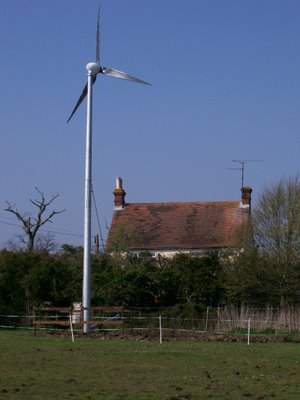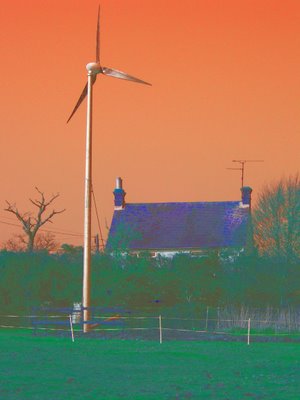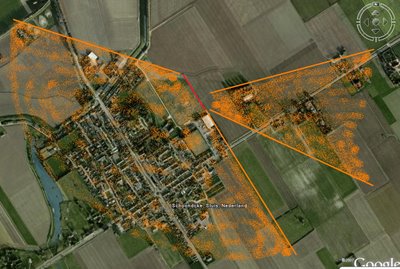Ampair reveals Award Winning new 6kW wind turbine
The new machine has a rotor diameter of 5.5 m and is ideal for supplying power to remote farms or rural houses, telecoms systems, public buildings, schools or industrial infrastructure, either offshore or onshore, for 230V grid connection or for 48V battery charging.

Photograph shows:
Ampair 6000w x 5.5m on 10m mast supplying a farmhouse in Berkshire, UK
Like all Ampair turbines, it is manufactured from high quality marine grade materials making it particularly suited to remote, coastal or cold-weather applications and in keeping with the company’s quality ethos is designed to be compliant with the IEC 61400-2 standard for a Class I turbine, which means it can be easily and safely installed worldwide. It is a fully sealed unit that does not require costly annual servicing.
A range of mast options is available. As with all turbines, more height gives greater power because of the increase in wind speed so Ampair can supply masts from 10m to 30m in a variety of styles including monopole or lattice; guyed or unguyed.
The price for the grid connected 230V system on a 10m mast is just £13,500+VAT. As Ampair’s managing director David Sharman says “We have always worked on an unsubsidised commercial basis and see no reason to charge the high prices that are the norm in the 6kW market. In my opinion, the current grant subsidies from Westminster and Scotland to favoured manufacturers are propping up this practice and are a distortion of the market and should be withdrawn immediately.”
Since 1973 Ampair has been recognised as a leader in small wind turbine technology with over twenty thousand units installed worldwide. There are Ampair turbines from the Antarctic to Alaska, and the Solent to the Sahara including some of the harshest environments known to man. The lessons learned from this continuous history are always incorporated into every generation of the company’s products, ensuring an extremely high “return for investment” level due to reliability and longevity.
The family-owned Ampair is Britain’s oldest wind turbine manufacturer and is proud to be an independent and thriving manufacturer with strong export sales through its network of global distributors. Additionally, the company prides itself on its after sales service and boasts that it can still service and maintain units going back over many years, often by the same experienced technicians who manufactured them decades ago.
The new Ampair 6000 fits neatly into a slot in the market which Ampair has been working to fill for several years to satisfy the rising demand for a turbine of this size made to Ampair’s high standards.
MORE INFORMATION:
T: 0845 3890660
F: 01344 303312
E: sales@ampair.com
W: www ampair.com
ATTACHMENTS:
Ampair product range, 2009
CD%203116%20Ampair%20product%20range%202009%20%28rev%201.0%2C%2015%20April%202009%29.pdf
Ampair 6000 specification sheet
Ampair%206000%20x%205%205%20technical%20specifications.pdf
Ampair 6000 drawings
ASMB00261.pdf
Rushlight awards logo

Ampair photo for print use

Ampair press release text as .doc
Ampair%20reveal%20new%206Kw%20wind%20turbine.doc
Ampair press release text as .pdf
Ampair%20reveal%20new%206Kw%20wind%20turbine.pdf
Labels: Ampair reveal stunning secret 6kW wind turbine, IEC 61400-2 small wind turbines edition 3 (CDV)

